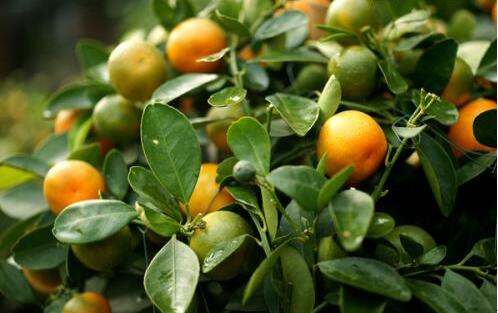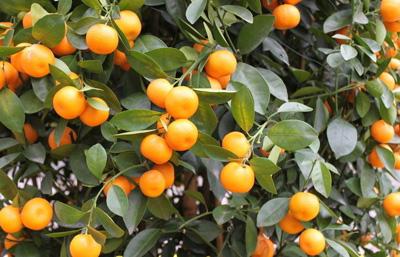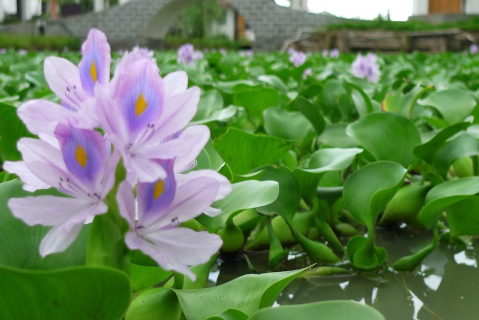Why did the kumquat tree lose its leaves?
The first reason is lack of nourishment.
If too little nitrogen fertilizer is applied to kumquat, the kumquat tree will lose its leaves. Or after it enters the dormant period, it fertilizes so much that it burns the roots and begins to lose leaves.
The second reason is improper watering.
When watering kumquat, too much water causes the root to rot, causing the kumquat tree to lose its leaves, or the water for the kumquat tree is not acidic enough, generally using specific water to water.
The third reason-insect pests
Kumquat trees are more prone to insect pests, if pests are not found in time, serious will lead to leaf shedding, so we should pay attention to insect pests.

The first reason for the yellowing of leaves in golden orange trees-physiological defoliation
If there are no mistakes in the process of cultivating kumquat trees, then the yellowing of the leaves of kumquat trees is a natural condition for growth. There is no need to worry too much about this situation, and new leaves will grow in the future.
The second reason-improper watering
The kumquat tree is not resistant to water and moisture, so if it is not watered properly, it is easy to cause the kumquat tree to wither, which causes the leaves of the kumquat tree to turn yellow.
The third reason-temperature management
Kumquat trees like the high temperature environment, so once the temperature is too low, it will lead to kumquat leaves yellowing and other problems.
The fourth reason-improper fertilization
If you fertilize the kumquat tree too much, it will cause the leaves of the kumquat tree to turn yellow, or accidentally sprinkle fertilizer on the leaves, burning the leaves and causing the leaves to turn yellow.
These are the reasons why the leaves of the golden orange tree turn yellow. Next, the editor will introduce the correct cultivation method of the golden orange tree.
What if the kumquat tree loses its leaves?
English name: kumquat alias: Golden jujube, golden bullet, jindan, kumquat, horsewater tangerine, kumquat, kumquat, brittle mandarin phylum: angiosperm: primitive perianth suborder: Rutaceae: subfamily Citrus: kumquat English name: kumquat Latin name: Fortunella margarita (Lour. ) Swingle: plants: dicotyledons: Rutaceae: Rutaceae: Citrus: distribution areas: Yangshuo, Jinshuo kumquat, Qinling Mountains, south of the Yangtze River, Guangxi
Lighting: like the sunny environment, slightly resistant to shade.
Temperature: the suitable temperature for growth is 22 ℃ 28 min.
Soil: like fertile, loose, acidic sandy loam. Pot soil should be mixed with 4 parts of rotten leaf soil, 5 parts of sandy soil and 1 part of cake fertilizer.
Watering: keep the basin soil moist during the spring growing season. When the summer temperature is high, water is watered in the morning and evening, and water is often sprayed around and leaves to increase air humidity. Reduce watering after autumn. The basin soil is moist and dry in winter.
Fertilization: in spring, fully mature cake fertilizer and water should be applied every 10 days or so. At the beginning of summer, alum fertilizer water is applied every 10 days to increase the acidity of the soil. Before autumn, fertilizer sufficient for phosphate fertilizer should be applied, and 0.1% Mel 0.2% potassium dihydrogen phosphate solution should be sprayed twice to increase the fruit setting rate. In winter, 0.1% magnesium sulfate is applied to the leaves every semimonthly. A mixture of 0.3% urea and 0.2% potassium dihydrogen sulfate.
Matters needing attention
Avoid spraying water during flowering to prevent rain during flowering, and do not spray water on blooming flowers, which is not conducive to pollination, but also easy to cause rotten flowers. Due to lack of light, kumquat prefers warm, humid and sunny environment, which is placed in the place of insufficient indoor sunlight for a long time, resulting in weak plant growth, affecting flower bud differentiation and fruiting. Avoid alkaline kumquat like acidic soil, potted plants in the north can be irrigated with fertilizer and water once a week, or potassium dihydrogen phosphate topdressing, or irrigated with 200 Mel 250 times vinegar water combined with fertilization every week, which is beneficial to thick green leaves, luxuriant growth and more fruit. Kumquat tree needs some conservation knowledge to ensure appreciation during the period. I hope the breeding methods and matters needing attention introduced above will be helpful to friends who want to plant kumquat tree.
- Prev

The reason for the yellowing of the leaves of golden orange trees
The first reason-physiological deciduous leaves if there are no mistakes in the process of culturing kumquat trees, then the yellowing of the leaves of kumquat trees is a natural condition for growth. There is no need to worry too much about this situation, and new leaves will grow later. The second reason-improper watering kumquat trees are not resistant to water and moisture
- Next

Matters needing attention in the culture of Phoenix blue
1. Under ventilated conditions, the plants should be protected in a well-ventilated environment to keep the air fresh, and Phoenix blue will grow more vigorously. two。 Apply sufficient base fertilizer before fertilization and planting, and often topdressing during the growth period, preferably with mature farm manure diluted in concentration. Be careful not to sprinkle it directly on the seedlings when topdressing.
Related
- Fuxing push coffee new agricultural production and marketing class: lack of small-scale processing plants
- Jujube rice field leisure farm deep ploughing Yilan for five years to create a space for organic food and play
- Nongyu Farm-A trial of organic papaya for brave women with advanced technology
- Four points for attention in the prevention and control of diseases and insect pests of edible fungi
- How to add nutrient solution to Edible Fungi
- Is there any good way to control edible fungus mites?
- Open Inoculation Technology of Edible Fungi
- Is there any clever way to use fertilizer for edible fungus in winter?
- What agents are used to kill the pathogens of edible fungi in the mushroom shed?
- Rapid drying of Edible Fungi

